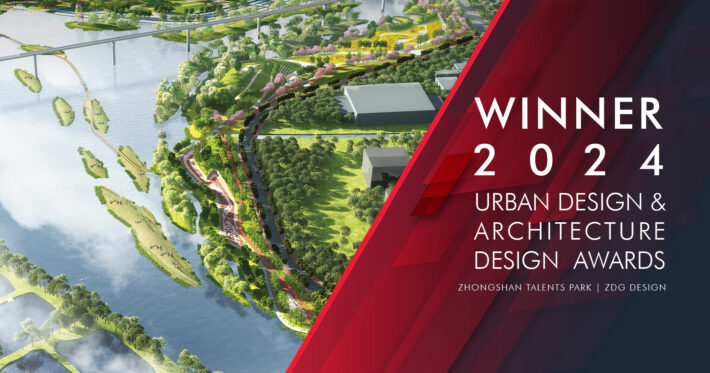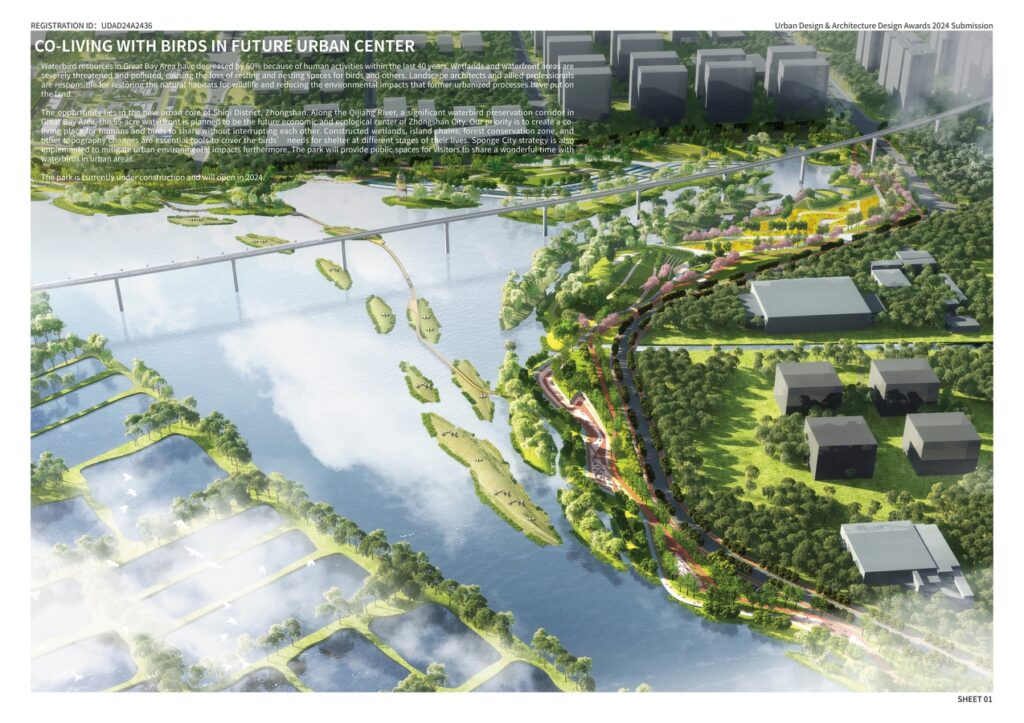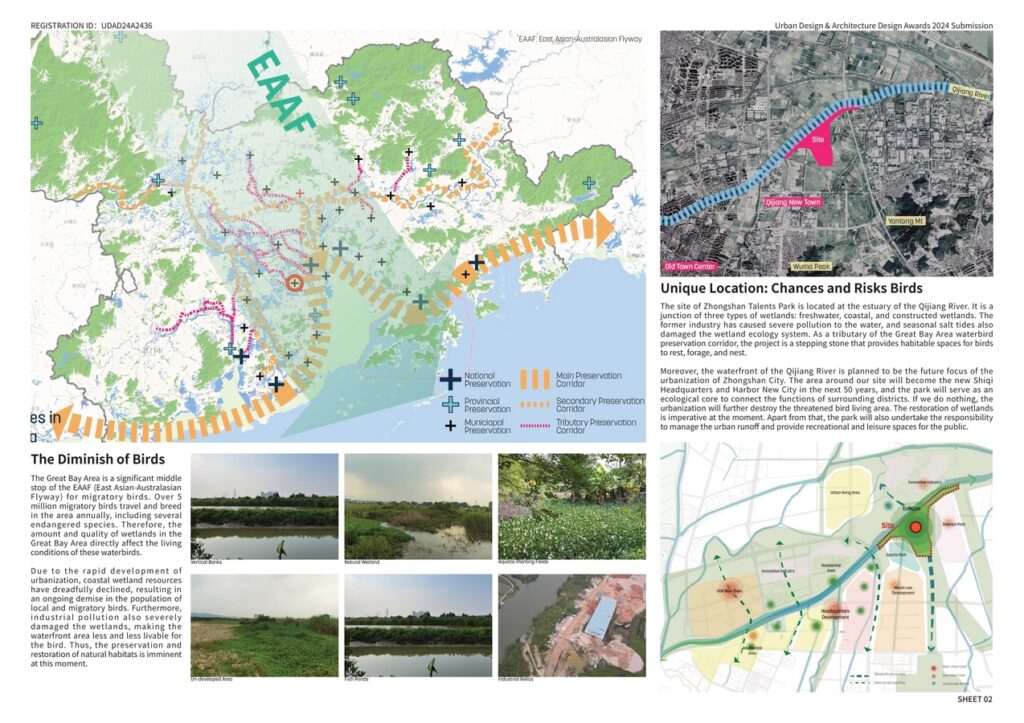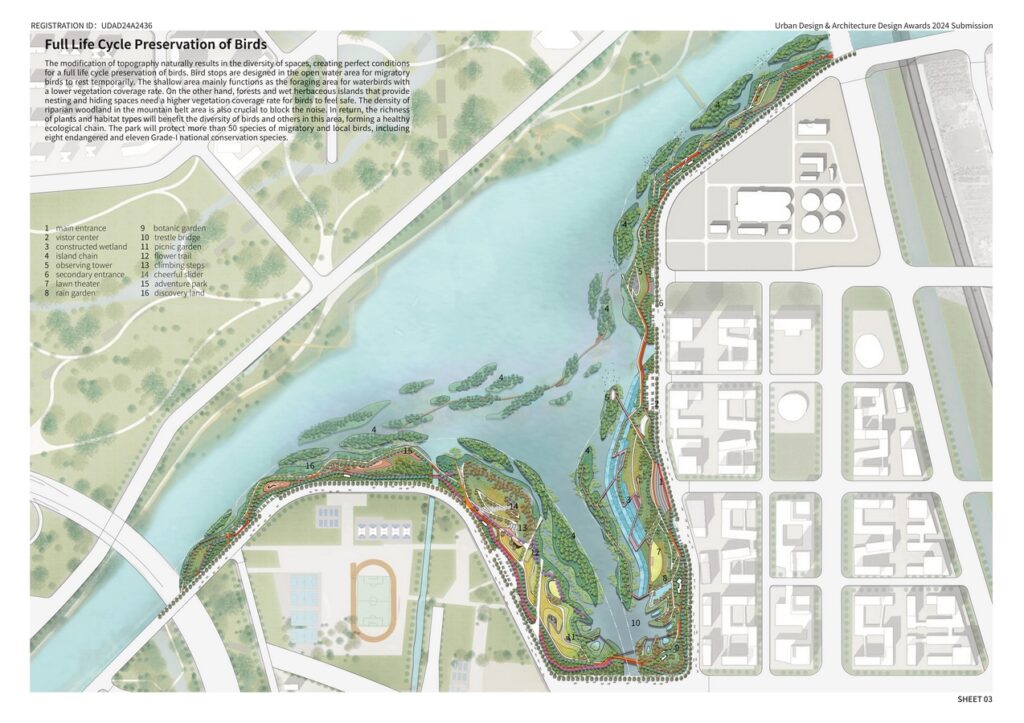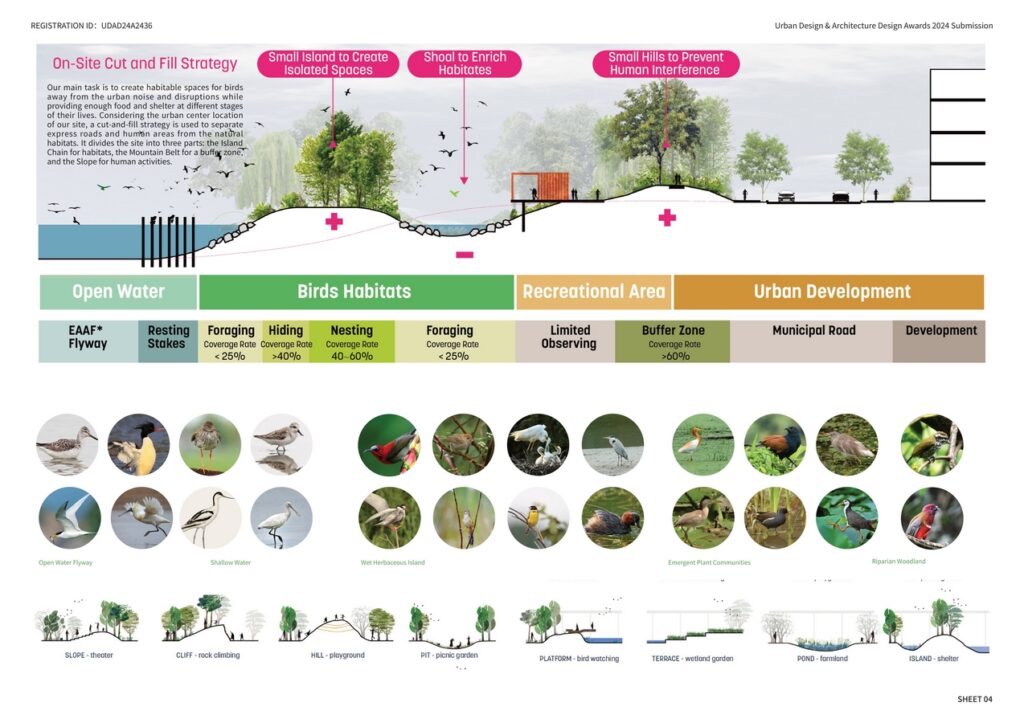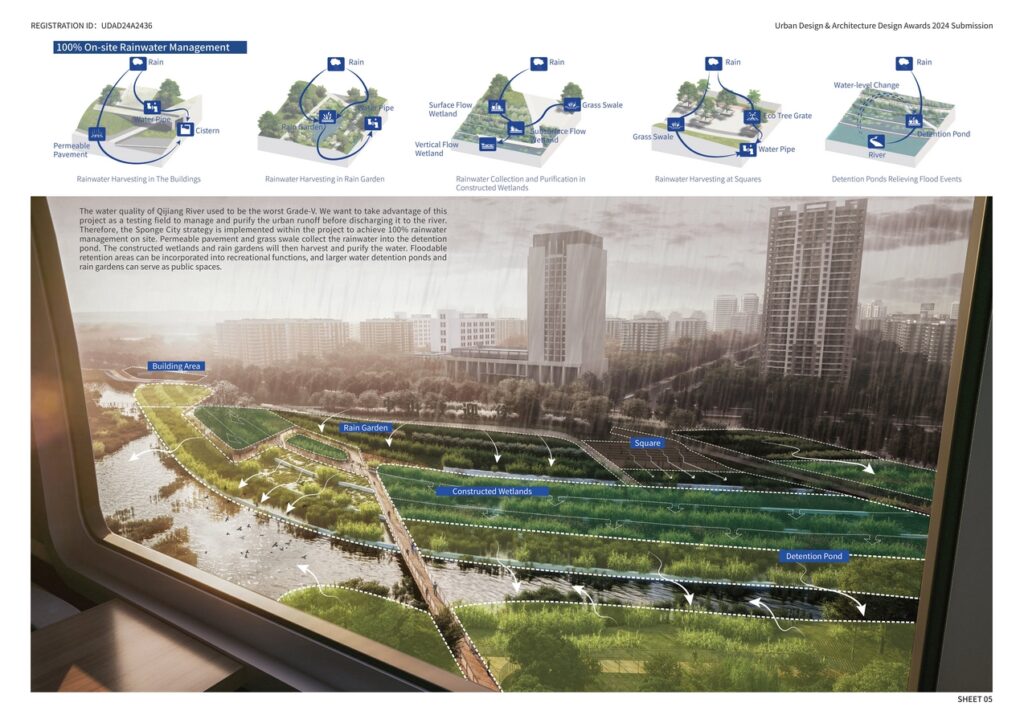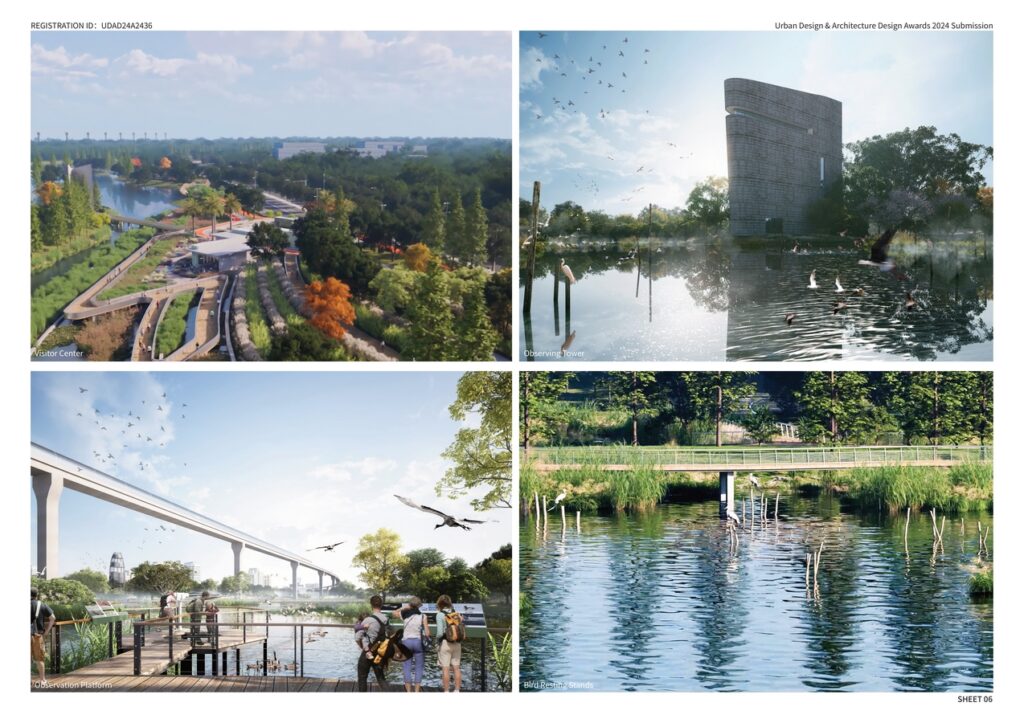Waterbird resources in Great Bay Area have decreased by 60% because of human activities within the last 40 years. Wetlands and waterfront areas are severely threatened and polluted, causing the loss of resting and nesting spaces for birds and others. Landscape architects and allied professionals are responsible for restoring the natural habitats for wildlife and reducing the environmental impacts that former urbanized processes have put on the land.
Urban Design & Architecture Design Awards 2025: Entries Open!
Take your work to the next level. Register Now…
Gold 🏆 Winner
Urban Design & Architecture Design Awards 2024
Zhongshan Talents Park
Urban Design (Under Construction)
Firm
ZDG Design
Architect/Designer
Huang Yang
Design Team
He Jiakun; Gao Hong; Ling Yuting; Chen Peiying; Ge Mengting; Liang Zhao; Zhu Anqi; Yang Xinyu; Wang Zuohan; Dai Qiaoqi; Yang Nandi; Zhu Zhoufei; Lai Zunheng; Shi Dongtian; Wang Qing
Location
Zhongshan, China
Country
China
Photographer/Copyright
©ZDG Design
The opportunity lies in the new urban core of Shiqi District, Zhongshan. Along the Qijiang River, a significant waterbird preservation corridor in Great Bay Area, the 55-acre waterfront is planned to be the future economic and ecological center of Zhongshan City. Our priority is to create a co-living place for humans and birds to share without interrupting each other. Constructed wetlands, island chains, forest conservation zone, and other topography changes are essential tools to cover the birds’ needs for shelter at different stages of their lives. Sponge City strategy is also implemented to mitigate urban environmental impacts furthermore. The park will provide public spaces for visitors to share a wonderful time with waterbirds in urban areas.
The park is currently under construction and will open in 2024.
Cut-and-fill Strategy
Our main task is to create habitable spaces for birds away from the urban noise and disruptions while providing enough food and shelter at different stages of their lives. Considering the urban center location of our site, a cut-and-fill strategy is used to separate express roads and human areas from the natural habitats. It divides the site into three parts: the Island Chain for habitats, the Mountain Belt for a buffer zone, and the Slope for human activities.
The waterfront area is first cut into a chain of islands, creating livable habitats for birds to rest and breed away from human access. Then, in the middle of the site, the ground is filled to become a series of “mountains,” functioning as the buffer zone between birds and human activities. As a result, the slope of the mountains becomes a lively space open to the urban area. The amount of the material from the cut matches the amount of fill, minimizing the construction labor and environmental pressure of the project.
Full Life Cycle Preservation of Birds
The modification of topography naturally results in the diversity of spaces, creating perfect conditions for a full life cycle preservation of birds. Bird stops are designed in the open water area for migratory birds to rest temporarily. The shallow area mainly functions as the foraging area for waterbirds with a lower vegetation coverage rate. On the other hand, forests and wet herbaceous islands that provide nesting and hiding spaces need a higher vegetation coverage rate for birds to feel safe. The density of riparian woodland in the mountain belt area is also crucial to block the noise. In return, the richness of plants and habitat types will benefit the diversity of birds and others in this area, forming a healthy ecological chain. The park will protect more than 50 species of migratory and local birds, including eight endangered and eleven Grade-I national conservation species.
100% Rainwater On-site Management
The water quality of Qijiang River used to be the worst Grade-V. We want to take advantage of this project as a testing field to manage and purify the urban runoff before discharging it to the river. Therefore, the Sponge City strategy is implemented within the project to achieve 100% rainwater management on site. Permeable pavement and grass swale collect the rainwater into the detention pond. The constructed wetlands and rain gardens will then harvest and purify the water. Floodable retention areas can be incorporated into recreational functions, and larger water detention ponds and rain gardens can serve as public spaces.


